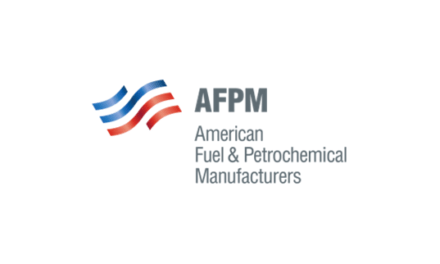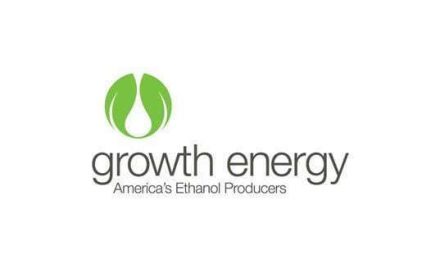Both general and commercial aviation face significant challenges, but work is progressing.
By Dr. Raj Shah, Dr. Vikram Mittal, Daisy-Ann Norman
There is a move across the transportation sector to upgrade to renewable power sources. In 2019, the global aviation industry burned 95 billion gallons of fossil fuels, resulting in emissions of over a billion tons of carbon dioxide, accounting for 12% of the total carbon emissions from the transportation sector, according to the International Energy Agency.
The International Air Transport Association has committed the aviation industry to achieve carbon neutrality by 2050. Initially, the aviation industry focused on carbon offsets, where airlines would invest in planting trees or land restoration to offset the carbon emitted from their aircraft. However, given the scale of the aviation industry, the global usage of carbon offsets would be difficult to implement, so the industry has recently committed to modernizing fleets to allow for more efficient and sustainable aircraft. In particular, the industry is investing in “greener” fuels that will be more carbon neutral.
Reciprocating Engines
Although much of the environmental push for the aviation industry is focused on larger commercial aircraft, the contribution from smaller, general aviation aircraft is not negligible. Small aircraft are used for a variety of purposes, ranging from personal travel to agriculture and tourism. In the United States alone there are almost 200,000 small aircraft, the bulk of which use internal combustion engines running on avgas.
The first approach to reducing the carbon footprint for small aircraft follows the advances made in the automotive community for electric vehicles. This makes sense given that many of these engines are comparable in size and power to automotive engines. Indeed, it is possible to power aircraft through a combination of batteries and motors. However, this approach is very heavy, especially when looking at the energy requirements for larger aircraft.
While not feasible for larger aircraft given the weight of batteries, several companies are developing electric versions of smaller airplanes. Rolls-Royce recently completed a 15-minute maiden voyage of a one-seater electric airplane capable of flying 300 mph. This airplane is primarily to show proof-of-concept for using an EV and could potentially serve certain niche applications, such as short commutes.
Lengthy charging times are another issue common for EVs and aircraft; however, newer battery chemistries are showing faster recharging times. Similar to automobiles, small airplanes cannot be readily modified to run on batteries and motors. As aircraft end their life cycle, new battery-powered planes would be available to replace them.
Many of the benefits of electrification can be realized through replacing the batteries with a hydrogen and a Proton Exchange Membrane (PEM) fuel cell. PEM fuel cell technology is fairly mature and has demonstrated efficiencies in excess of 70%, according to the EIA. PEM fuel cells do not generate hazardous emissions since the only real byproduct is water. A PEM fuel cell vehicle would be zero emissions.
Still, PEM fuel cells have several disadvantages. First, like electrification, their use would require a complete overhaul of the small aircraft fleet, a process that would span decades. Second, hydrogen has several large challenges, especially related to storage and production. Notwithstanding, several companies have developed hydrogen fuel cell aircraft.
The third alternative avoids the issues associated with electrification by changing the fuel from being oil-based to being derived from other carbon-based sources. This approach does not require significant modification to the aircraft, while also potentially allowing TEL to be removed from the fuel.
The most natural option would be ethanol, given its high-octane number and commercial availability, especially in the United States and Brazil. Ethanol [can be] more expensive than avgas, and there are issues with cold starting and corrosiveness, which the automotive industry is resolving using additives in the fuel. However, a bigger challenge comes from the energy density of ethanol. Ethanol only has an energy content of 30 MJ/kg as compared to gasoline, which has a value of 44 MJ/kg. Since aircraft designs are weight-constrained, the additional fuel weight must be considered.
Ethanol is not the only green alternative. Several countries, including Germany and Brazil, are evaluating other biofuel options. Biofuels made from wasted animal products tend to avoid many of the issues associated with ethanol. They can achieve many of the properties as gasoline, including energy density.
Another attractive option is electric fuels, such as the ones under development by Porsche. These fuels are produced from extracting carbon dioxide from the atmosphere and combining it with water. By adding energy to this mix, the mixture is converted into carbon monoxide and hydrogen, commonly referred to as syngas. Syngas can then be reformed into a variety of fuels, including avgas or gasoline. E-fuels are sustainable if the energy for reversing the combustion process is from a renewable source, such as solar or wind.
A challenge with each of these approaches is cost. Ethanol is the only alternative that is comparable in cost to avgas. However, new developments in renewable energy sources, catalysts and agriculture should decrease prices.
Turbine Engines
The bulk of the aviation industry relies on turbine engines that run on jet fuel, which is basically kerosene. The aviation industry is moving away from traditional jet-fuel.
Given the challenge of energy densities of batteries coupled with the weight-constrained nature of modern aircrafts, battery-electric options are not feasible. Since electrification is not possible for these aircraft, the airline industry is evaluating two other replacement options for jet-fuel—hydrogen and synthetic aviation fuel.
The first alternative involves replacing jet fuel with hydrogen in a turbine engine. Hydrogen combusts with oxygen like jet fuel; however, the combustion process only generates water as a byproduct. Further, a given mass of hydrogen has more than three times the energy of a similar mass of jet fuel. With these benefits in mind, Airbus is actively developing the ZEROe concept aircraft, which will use hydrogen combustion. The prototype of the ZEROe airplane is expected in 2035.
Despite the many benefits of hydrogen, significant technical challenges remain, with the largest issue being storage. Typical storage tanks for hydrogen are voluminous and heavy, with most tanks being more than 10 times heavier than the hydrogen it contains. However, new advances are being made in metal hydrides that are offering a compact storage option. In particular, aluminum hydroxide, commonly referred to as alane, offers a promising storage mechanism for hydrogen.
Another issue arises from the sustainability of hydrogen. Hydrogen is produced from the partial combustion of methane, resulting in a carbon footprint comparable to jet fuel. However, many countries, including the U.K., Japan, Norway and France, are building hydrogen production facilities that use solar and wind power to electrolyze water to produce hydrogen, resulting in no carbon footprint.
A larger issue is that current aircraft engines cannot readily burn hydrogen. Rather, the engines and fuel tanks would require significant modification to allow the plane to run on hydrogen, to the degree that the entire plane would likely require re-design.
The more practical alternative for kerosene is synthetic aviation fuels. SAF is not petroleum-based; rather it is produced from biomaterial, including plant products, used cooking oils, organic waste material and animal fat. SAF can be used as a direct replacement for kerosene in most airplanes and does not require significant engine modifications. And, unlike oil, SAF feedstock may be replenished on a continuous basis. According to independent research, enough renewable feedstock exists to power the whole airline fleet.
Although the name implies that SAF is sustainable, there are several large sustainability challenges associated with its usage. First, the biomass for SAF can potentially compete with food crops. Additionally, the generation of biomass for SAF necessitates a large amount of land, which can result in environmental deterioration. Moreover, some of the processes for converting biomass into SAF are inefficient.
Another technical challenge is associated with the amount of SAF allowed in an engine. Currently, engine manufacturers limit the blending ratio of SAF to 50%. Recent developments out of the National Renewable Energy Laboratory identified a pathway for producing SAF from food-waste-derived fatty acids to allow for a 70% blending limit. Rolls-Royce has successfully tested a new engine that can run on 100% SAF.
SAF still faces a major roadblock related to its cost. SAF is about five times the cost of traditional jet fuel. One promising technique for reducing the cost is to produce SAF from algae, which is inexpensive and has a high crop yield. Another longer-term option, termed solar jet fuel, uses concentrated sunlight to synthesize carbon dioxide and water vapor into a hydrocarbon, which can be refined into jet fuel.
The IATA goal of achieving carbon neutrality by 2050 requires addressing both the small aircraft sector, which uses avgas, and the large aircraft sector, which uses kerosene. The sustainability goals for the small aircraft market can be achieved through a combination of biofuels, hydrogen fuel cells, and battery-electric power. Eventually, battery-electric aircraft will serve for short-range applications, such as commuting and crop-dusting, and hydrogen fuel cell aircraft will be used for applications that require longer ranges.
A harder challenge is the large aircraft sector, especially given its increasing demand and the large amount of fuel used annually. The aviation market is investing in two key technologies—hydrogen and SAF. This sector would require the use of hydrogen-powered aircraft for short-duration flights and SAF for longer flights. However, given the projected production of SAF and hydrogen, the sustainability goals will likely still require carbon offsets to achieve carbon neutrality by 2050.
 Dr. Vikram Mittal is an assistant professor at the United States Military Academy in the Department of Systems Engineering.
Dr. Vikram Mittal is an assistant professor at the United States Military Academy in the Department of Systems Engineering.
 Dr. Raj Shah is a director at Koehler Instrument Company. He is an elected Fellow by his peers at IChemE, CMI, STLE, AIC, NLGI, INSTMC, Institute of Physics, The Energy Institute and The Royal Society of Chemistry. He can be reached at [email protected].
Dr. Raj Shah is a director at Koehler Instrument Company. He is an elected Fellow by his peers at IChemE, CMI, STLE, AIC, NLGI, INSTMC, Institute of Physics, The Energy Institute and The Royal Society of Chemistry. He can be reached at [email protected].
 Daisy Ann Norman is part of a thriving internship program at Koehler Instrument Company and is a student of chemical engineering at State University of New York, Stony Brook, where Drs. Mittal and Shah are part of the external advisory board of directors.
Daisy Ann Norman is part of a thriving internship program at Koehler Instrument Company and is a student of chemical engineering at State University of New York, Stony Brook, where Drs. Mittal and Shah are part of the external advisory board of directors.










